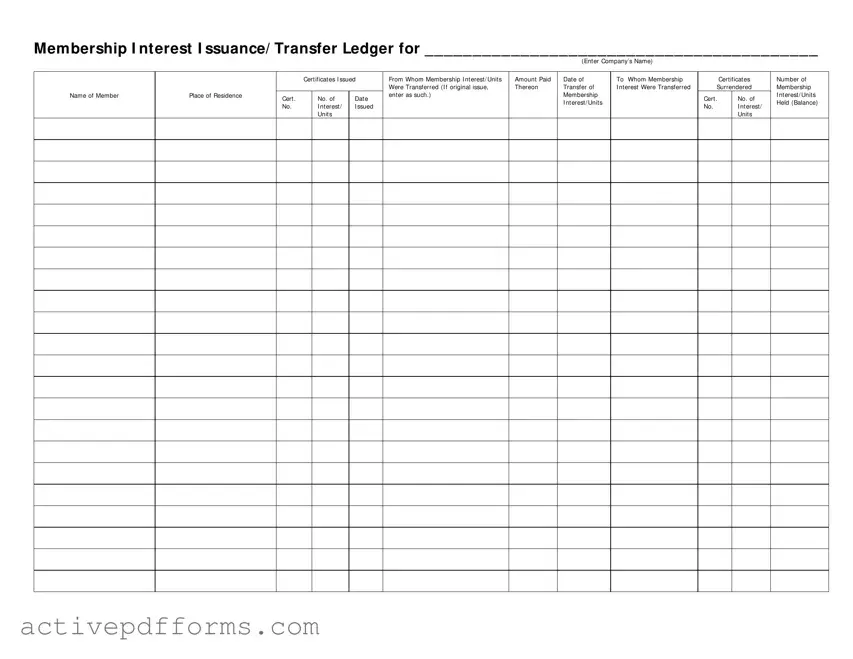Free Membership Ledger PDF Template
The Membership Ledger form serves as an official record to document the issuance and transfer of membership interests within a company. It meticulously tracks the flow of membership units from their issuance, detailing the amount paid and the involved parties, to their transfer, marking to whom the interests were transferred and the balance held post-transaction. This form not only ensures transparency within the company's ownership structure but also aids in maintaining accurate and up-to-date records of the company’s membership dynamics.
Edit Membership Ledger Now

